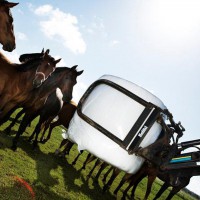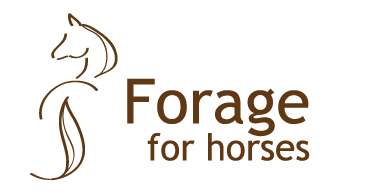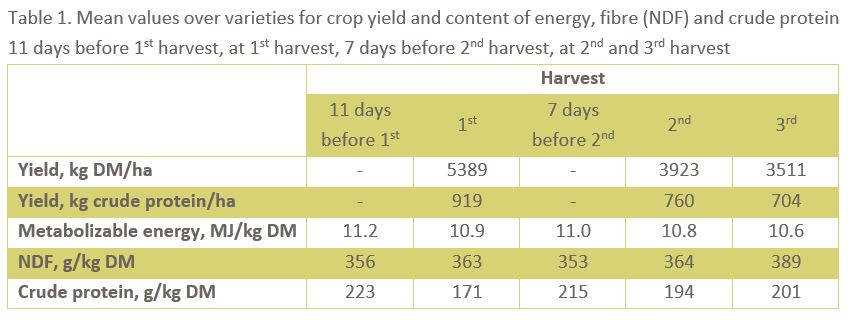Harvest date most important for protein and fibre in red clover

Red clover (Trifolium pratense L.) is protein rich and relatively risk-free to grow. The later the stage of maturity the lower protein content and higher fibre content in the red clover, which is due to that the stem part increases at the expense of the leaf part. In this study five different varieties of red clover were harvested at five different harvest dates in the south of Sweden. The red clover varieties were SW Ares, Nancy, Rozeta, Vicky and Taifun. Harvest dates were 11 days before first harvest (31/5), at first harvest (11/6), 7 days before second harvest (16/7), at second harvest (23/7) and at third harvest (4/9).
Harvest date had greater impact than variety on nutritive content and quality and the results are therefore shown as mean values over all varieties in Table 1. The differences observed between varieties could largely be explained by differences in stage of maturity at harvest. Altogether over all varieties the crop yield was greater for first harvest than for the regrowths for dry matter (DM) and for crude protein (cp) (Table 1). Just like for grass the metabolizable energy decreased with later harvest date which can be explained by the increased fibre content (Table 1). The cp content decreased with later harvest date for first and second harvest but the regrowths had higher protein content than the first harvest (Table 1). This is partly due to higher leaf part in the red clover at earlier harvest dates and in the regrowths.
Harvest date also has the greatest impact on nutritive quality in grass, these factors are important for us to be able to choose the right forage to the right type of horse. This also shows the importance of the forage analysis and calculating the feed ration.
Sara Muhonen, AgrD

